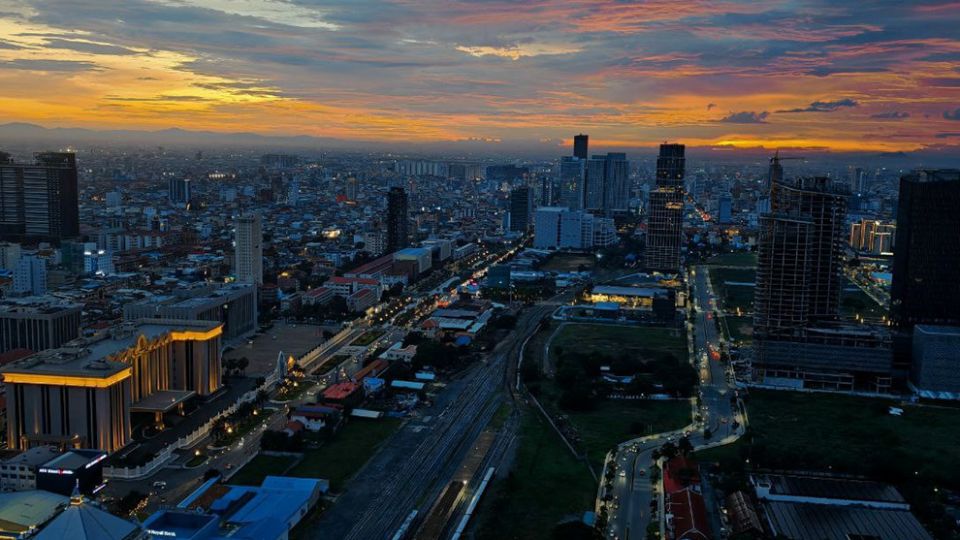November 27, 2025
PHNOM PENH – Phnom Penh is set to become one of Southeast Asia’s fastest-heating capitals, with the UN warning that extreme heat is reshaping the region’s disaster landscape and placing unprecedented pressure on urban life, public health and infrastructure.
The alert comes from the Asia-Pacific Disaster Report 2025: Rising Heat, Rising Risk, released on November 26 by the UN Economic and Social Commission for Asia and the Pacific (ESCAP).
The report paints a stark picture: rising temperatures are “impacting all, everywhere”, driving the fastest-growing climate-related hazards across the region.
The findings resonate strongly in Cambodia, where Phnom Penh is projected to face a major surge in extreme heat.
According to ESCAP’s analysis, the capital is among the urban centres expected to become significantly hotter, with the urban heat island effect adding an extra 2°C to 7°C on top of global warming.
“Urban areas are particularly high-risk locations due to the urban heat island effect. Densely built surfaces trap heat and elevate city temperatures above those of surrounding rural areas,” said the report.
“Many Asian cities such as Seoul, Tokyo, Beijing, Delhi, Karachi, Dhaka, Manila, Jakarta and Phnom Penh are projected to be substantially hotter in the years ahead, with this effect adding an extra 2°C-7°C on top of global warming,” it continued.
This amplification effect is already evident in many Asian cities, but the report identifies Phnom Penh as one of the high-risk hotspots in Southeast Asia.
Cambodia is also expected to endure more than 250 days per year above a 35°C heat index and up to 138 days above 41°C by the end of the century, placing large parts of the country in “dangerous” or “extreme” heat categories.
These thresholds pose serious health risks, including heatstroke, cardiovascular strain and heightened vulnerability for children, the elderly and outdoor workers.
Urban pressure mounting
ESCAP warns that densely built and rapidly urbanising cities like Phnom Penh are highly exposed due to the way concrete, asphalt and limited green spaces trap heat. In poorer and more crowded neighbourhoods, residents will face the brunt of this exposure.
“As access to cooling, water and healthcare come under increased strain, children, the elderly and outdoor low-wage earners in poor and densely populated urban areas are disproportionately affected,” the report noted.
Demand for air-conditioning is expected to surge, putting pressure on Cambodia’s power grid. During extreme heat, energy systems are often the first to fail, creating life-threatening conditions when cooling systems break down.
Wider region already in crisis
The report situates Cambodia’s heat risks within a broader regional emergency.
In 2024 — the hottest year on record globally — Asia and the Pacific saw severe heatwaves, including one in Bangladesh that affected 33 million people and another in India that caused around 700 fatalities.
New projections show that by 2100, annual regional disaster losses could climb from $418 billion to $498 billion under a worst-case climate scenario.
Extreme heat is expected to become a chronic, near year-round hazard across South and South-West Asia, parts of Southeast Asia and Australia.
Heat “knows no borders”
“Heat knows no borders; therefore, policy responses must anticipate impacts, reduce exposure and vulnerability at scale and safeguard those most at risk,” said Armida Salsiah Alisjahbana, UN undersecretary-general and executive secretary of ESCAP, during the launch of the report, in Bangkok.
She urged governments to prioritise long-term, science-based risk planning, strengthen regional cooperation and place heat at the centre of multi-hazard strategies.
The report highlighted that only 54 per cent of global meteorological agencies currently issue warnings for extreme temperatures.
Expanding heat-health warning systems to just 57 additional countries could save about 100,000 lives every year, it noted.
Cambodia’s adaptation gap
For Cambodia, the enhanced risk underscores the need to accelerate national and municipal adaptation planning. Phnom Penh’s rapid urban expansion, limited tree cover, rising energy demand and growing low-income population create a dangerous combination during heatwaves.
ESCAP warns that without better-coordinated early warning systems, strengthened healthcare resilience and inclusive social protection, cities like Phnom Penh will struggle to keep pace with rising temperatures.
New regional initiatives
To help countries cope, ESCAP announced three new initiatives aimed at strengthening heat resilience:
- expanding climate-resilient and inclusive social protection schemes;
- establishing cross-border green cooling corridors;
- and deploying space-based technologies for improved heat monitoring and early warning.
The initiatives were unveiled at the Ninth Session of the Committee on Disaster Risk Reduction, taking place in Bangkok until November 28.


